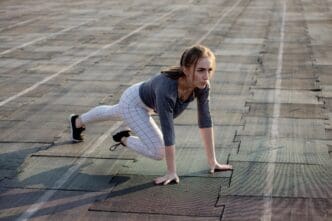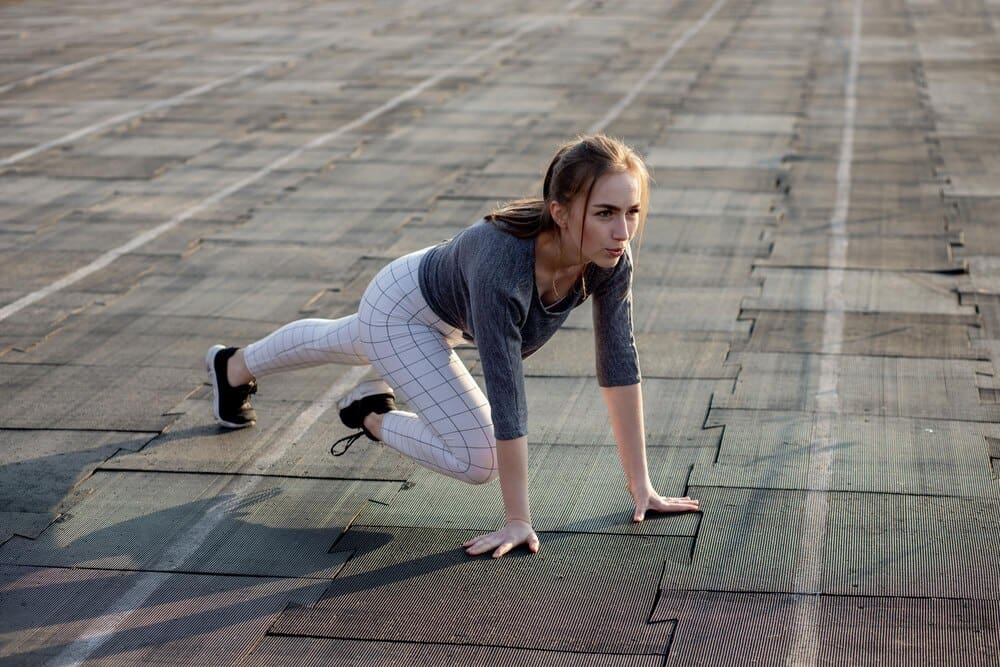For runners of all levels seeking to unlock new speed, the solution often lies not in running harder, but in running smarter. This is where running drills—a series of specific, exaggerated movements—become an indispensable tool. Performed after a warm-up on a flat surface like a track or field, drills like High Knees, A-Skips, and Butt Kicks are designed to deconstruct the running stride into its core components. By isolating and strengthening these specific movement patterns, you can improve your neuromuscular coordination, enhance running economy, and refine your form, ultimately leading to a more powerful, efficient, and faster stride with a reduced risk of injury.
The Science of a Faster Stride: Why Drills Work
At its core, running faster is a simple equation: you either increase your stride length (the distance you cover with each step) or you increase your stride frequency (the number of steps you take per minute, also known as cadence). The most efficient runners excel at both. Running drills are a form of targeted practice that directly addresses these two variables.
Think of it like a musician practicing scales. A pianist doesn’t just play complex concertos; they spend hours on scales and arpeggios to build finger dexterity and muscle memory. Running drills serve the same purpose for your body. They break down the complex, full-body motion of running into manageable parts, allowing you to focus on and improve each one individually.
This process works by reinforcing ideal movement patterns and improving what exercise scientists call neuromuscular efficiency. Your brain learns to send signals to your muscles more quickly and effectively, recruiting the correct muscle fibers in the proper sequence. This results in less wasted energy, a more powerful push-off from the ground, and a quicker leg turnover, all of which contribute to greater speed.
Furthermore, drills improve your proprioception—your body’s awareness of its position in space. By exaggerating movements, you become more attuned to your posture, foot strike, and arm swing. This heightened awareness translates directly into better form when you’re fatigued at the end of a long run or race, helping you maintain efficiency and prevent injuries.
The Essential Running Drills for Speed
To get the most out of your drill session, focus on quality over quantity. Perform each drill for a distance of 20 to 30 meters, followed by a walk back to your starting point for recovery. Aim for crisp, precise movements. It’s better to do one set perfectly than three sets sloppily. Integrate these into your routine one to three times per week after your warm-up and before your main workout.
High Knees
Why it works: This classic drill is fundamental for developing a powerful knee drive, which is crucial for increasing stride length. It strengthens the hip flexors and core while teaching you to lift your feet off the ground vertically, rather than shuffling.
How to do it: Stand tall with your chest up and core engaged. Begin by jogging in place, but focus on driving one knee up toward your chest at a time. Your thigh should aim to be parallel to the ground. Maintain a quick rhythm, landing lightly on the balls of your feet. Your arms should be bent at 90 degrees, swinging in sync with your opposite leg, just as they would when running.
Butt Kicks
Why it works: Butt Kicks focus on the second half of the stride: hamstring activation and a quick heel recovery. By training your hamstrings to fire rapidly, you shorten the time your foot spends behind your body, allowing for a faster leg turnover and increased cadence.
How to do it: With the same tall posture as High Knees, focus on pulling your heel directly up towards your glute as quickly as possible. The movement should be initiated from the hamstring, not by simply bending the knee. Keep your thighs perpendicular to the ground and avoid leaning forward. Think “fast feet,” with minimal forward movement.
A-Skips
Why it works: The A-Skip combines the knee drive of High Knees with a coordinated “popping” motion. It is perhaps the single most effective drill for teaching the fundamentals of good running form: a tall posture, a powerful knee drive, and a forceful push-off from the ground.
How to do it: Start with a skipping motion. As you skip, drive your right knee up high, similar to a High Knee. As your right knee drives up, your left foot should “pop” off the ground in a small hop. Land on the ball of your left foot, then immediately switch sides, driving your left knee up as your right foot “pops.” The motion should feel rhythmic and bouncy. Keep your ankles dorsiflexed (toes pointed up) to prepare for a proper landing.
B-Skips
Why it works: The B-Skip builds directly on the A-Skip by adding a crucial “paw-back” motion. This drill is exceptional for developing hamstring strength and teaching you how to actively pull your foot down and back towards the ground, creating propulsive force.
How to do it: Begin by performing an A-Skip, driving your knee up. At the peak of the knee drive, extend your lower leg forward. Then, in a sweeping motion, pull your leg back down and under your hip, “pawing” at the ground. The goal is to feel your hamstring engage as you pull your leg through. This is a complex drill, so start slowly to master the coordination before adding speed.
Carioca (or Grapevine)
Why it works: Running is primarily a forward motion, but hip mobility and stability are critical for efficiency and injury prevention. The Carioca drill enhances lateral mobility, coordination, and the ability to rotate your hips, which is vital for a smooth and powerful stride.
How to do it: Move sideways with your arms extended out to your sides for balance. Start by crossing your right foot in front of your left. Then, step out with your left foot. Next, cross your right foot behind your left foot. Step out again with your left. Continue this “front, side, back, side” pattern, focusing on twisting your hips and keeping your movements fluid. Perform the drill in both directions.
Straight-Leg Bounds
Why it works: This drill is excellent for improving hamstring flexibility and teaching the “pulling” phase of the running stride. It forces you to engage your glutes and hamstrings to propel yourself forward while maintaining a stiff leg, reinforcing an efficient foot strike directly underneath your center of mass.
How to do it: Keeping both legs relatively straight (with a very slight bend at the knee), bound forward by scissoring your legs. As one leg moves forward, the other pushes off the ground. Land on your midfoot and focus on a quick turnover, pulling your feet off the ground using your hamstrings and glutes. Keep your torso upright and core tight.
Strides (or Accelerations)
Why it works: Strides are the bridge between drills and actual running. They allow you to integrate the improved form and neuromuscular patterns you’ve just practiced into a fluid, fast running motion. They are not all-out sprints, but rather controlled accelerations.
How to do it: Find a stretch of about 80 to 100 meters. Start by jogging slowly and then gradually and smoothly accelerate over the course of the distance, reaching about 85-95% of your maximum speed. Focus on feeling relaxed and maintaining the good form you practiced in your drills—tall posture, quick cadence, and powerful knee drive. Once you hit top speed, hold it for a few seconds before gradually decelerating to a stop. Walk back to the start and repeat 4-6 times.
Putting It All Together: Your Drill Routine
Incorporating drills doesn’t need to be complicated. A simple, effective routine can take as little as 10-15 minutes and will pay significant dividends for your running.
A sample pre-run drill session might look like this:
- Warm-up: 5-10 minutes of easy jogging.
- Drills (1 set each):
- 25 meters of High Knees, walk back recovery.
- 25 meters of Butt Kicks, walk back recovery.
- 25 meters of A-Skips, walk back recovery.
- 25 meters of Carioca (right), walk back recovery.
- 25 meters of Carioca (left), walk back recovery.
- Strides: 4 x 80 meters with full walk-back recovery.
- Main Run: Proceed with your planned workout for the day.
As you become more comfortable, you can add more complex drills like B-Skips and Straight-Leg Bounds or increase the number of sets.
A Final Thought on Consistency
Improving your running speed through drills is not an overnight fix; it’s an investment in your long-term development as a runner. The key is consistency and a focus on perfect execution. By dedicating a small amount of time each week to practicing these fundamental movements, you are systematically rewiring your body to be more efficient, more powerful, and less prone to injury. Over time, these small, deliberate actions will compound, translating into a faster, smoother, and more enjoyable run.







